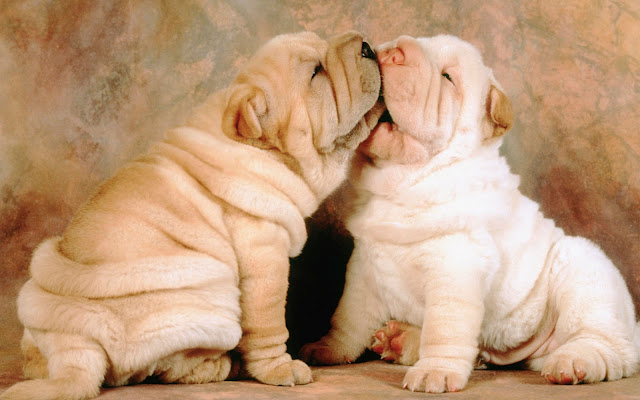Fast Facts
Group classification: Non-Sporting Country of origin: China Date of origin: Antiquity
Weight (M): 50 - 70 lb Height (M): 18 - 20" Life expectancy: 8 - 12 years
Weight (F): 45 - 65 lb Height (F): 17 - 19"
1.General Description of the Chow Chow
The Chow Chow is a firm, powerful, squarely-built dog of medium size. Heavy bones and solid muscles endow the breed with its characteristic working appearance. The Chow Chow can have black, cinnamon, red, blue and cream coloring, and its appearance reflects northern roots and capability of enduring extremely cold temperatures. The breed’s wide-set, triangular ears are carried erectly with a slight forward incline and rest on a short, small and flat skull. The Chow Chow’s medium-sized, deep set, dark brown eyes are well separated and have an almond shape. It is possible for the breed to have two different coat-types; smooth or coarse, both of which are double-layered. The coarse-coated Chow Chow has a wooly, dense undercoat and a straight, extended outer-coat that forms a teeming ruff encircling the head and neck. The smooth-coated Chow Chow lacks the off-standing outer-coat but is otherwise identical. The tongue is blue-black and the inside of the mouth is black.
2.Chow Chow Temperament
The Chow Chow is an independent, dignified and intelligent breed—characteristics some say cause the breed to come across as detached, or cold. The breed is notoriously reserved and cautious in the presence of strangers but is not aggressive toward people. Although most Chows will work hard to dominate other dogs, the breed is usually quite good with children. The Chow’s compatibility with other pets depends on its exposure and socialization early in life, but is usually not good. Because of the breed’s determined and often over protective personality, it is crucial that obedience training begin at a young age to assure a well-adjusted adult dog.
3.Caring for a Chow Chow
The Chow Chow is a heavy shedder that, regardless of coat type, will require extensive grooming and needs to be shampooed on a regular basis. Owners should use a steel-toothed comb and devote special attention to the areas behind the ears and beneath the legs, as knots can form quite quickly in these regions. The Chow Chow has the potential to do well in an apartment, but it should receive adequate exercise in order to prevent excess weight gain. A daily walk will likely suffice. It is vital for owners to remember that the Chow Chow originated under very cold conditions and watch carefully for signs of over-heating, particularly in humid environments. Major health concerns for the Chow Chow include canine hip and elbow dysplasia, patellar luxation and entropion. Other concerns include distichiasis, cataracts, persistent papillary membrane, elongated palate, glaucoma, gastric torsion and stenotic nares.





















































